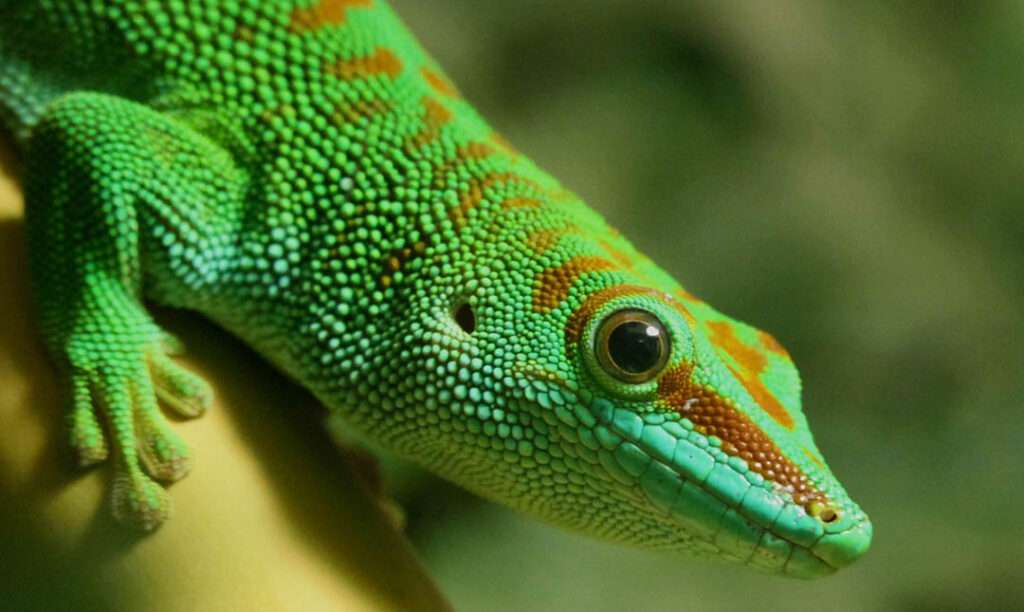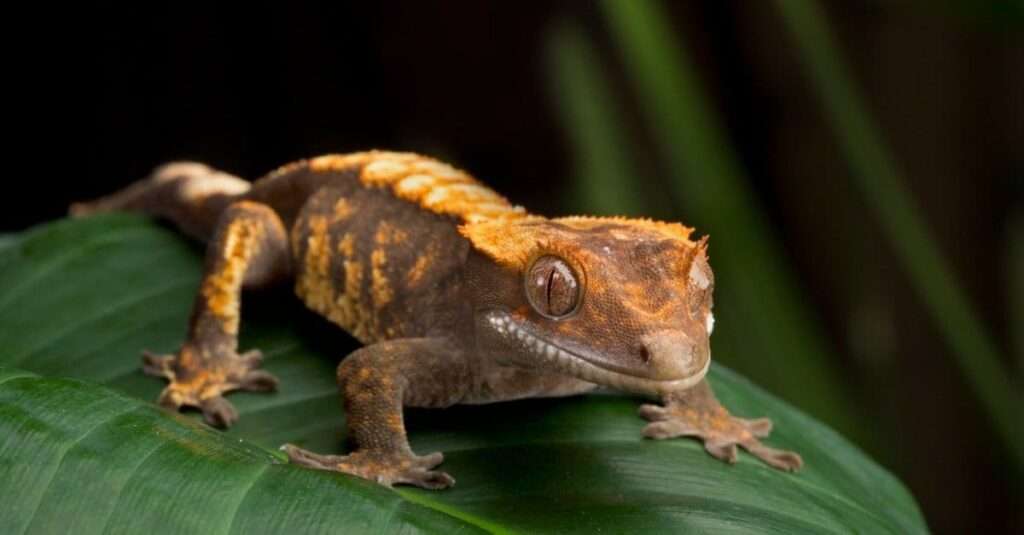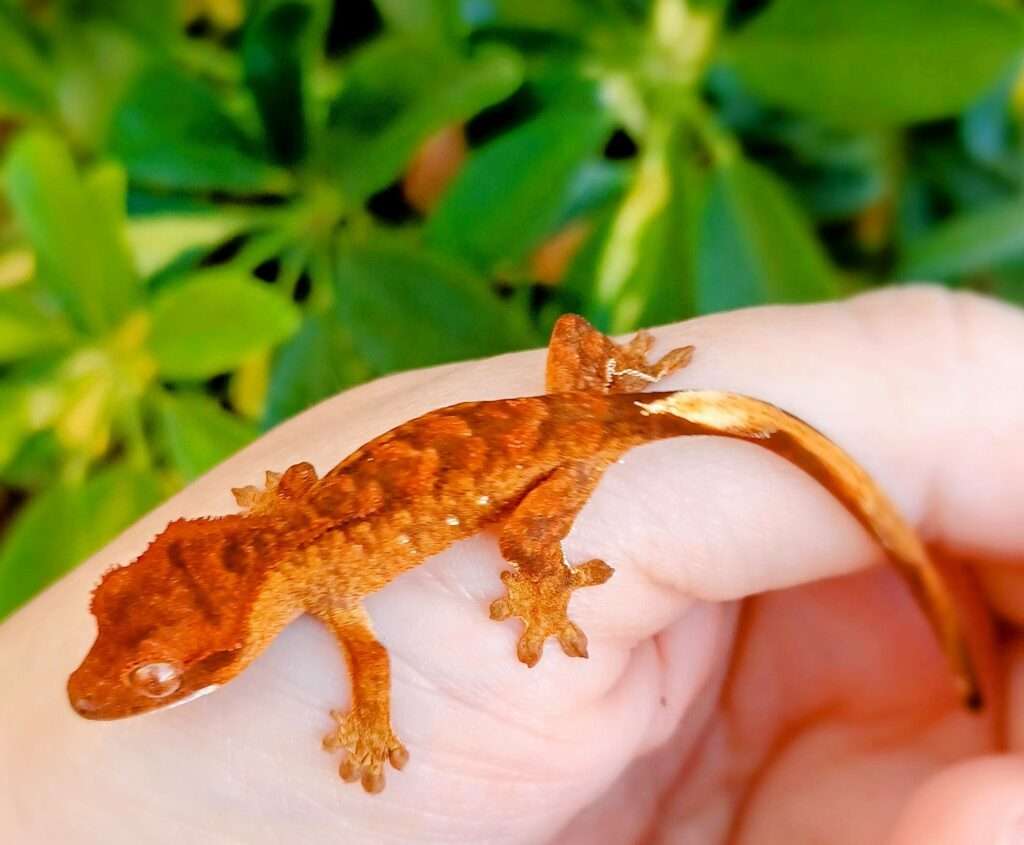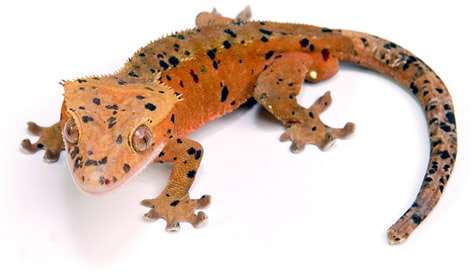
Description:
Scientific name: Phelsuma madagascariensis madagascariensis
Life span: 8-15 years
A diurnal species of gecko is the Madagascar day gecko (Phelsuma madagascariensis madagascariensis). The body is a pale or bluish green tint. Frequently, the skin between the scales is pale in hue. From the nostril to the area behind the eye, there is a rust-colored line. Brownish or reddish-brick coloured spots may create a narrow line in the middle of the animal’s back. These geckos have flattened toe pads and lack eyelids.
Native Region/Habitat
It’s common to find P. m. magascariensis on trees on the margins of woods. Because to the humid and warm atmosphere, they also reside in native huts and banana trees on Madagascar’s east coast.
Behavior:
The males, like the majority of the Phelsuma species, may be highly argumentative and do not allow other males in their neighbourhood. Males can occasionally badly hurt females in captivity, if they cannot flee. The male and female must be kept apart in this situation.
Care As a pet/In captivity:

Because they are so fiercely territorial, these creatures should be kept in solitary housing. Male and female couples can get along, yet it happens frequently that males harass women excessively. They require a sizable, lush terrarium. The ideal range for the temperature is 25 to 28 °C. The ideal temperature for a warm area is 35–40 °C. The humidity levels should be kept between 75 and 90% at night and between 60 and 80% during the day. These animals can be fed crickets, houseflies, mealworms, fruit flies, wax moth larvae, and mealworm pupae in captivity. To keep their internal moisture stable, fresh tropical fruits, honey, and fruity baby foods are all beneficial.
Table





